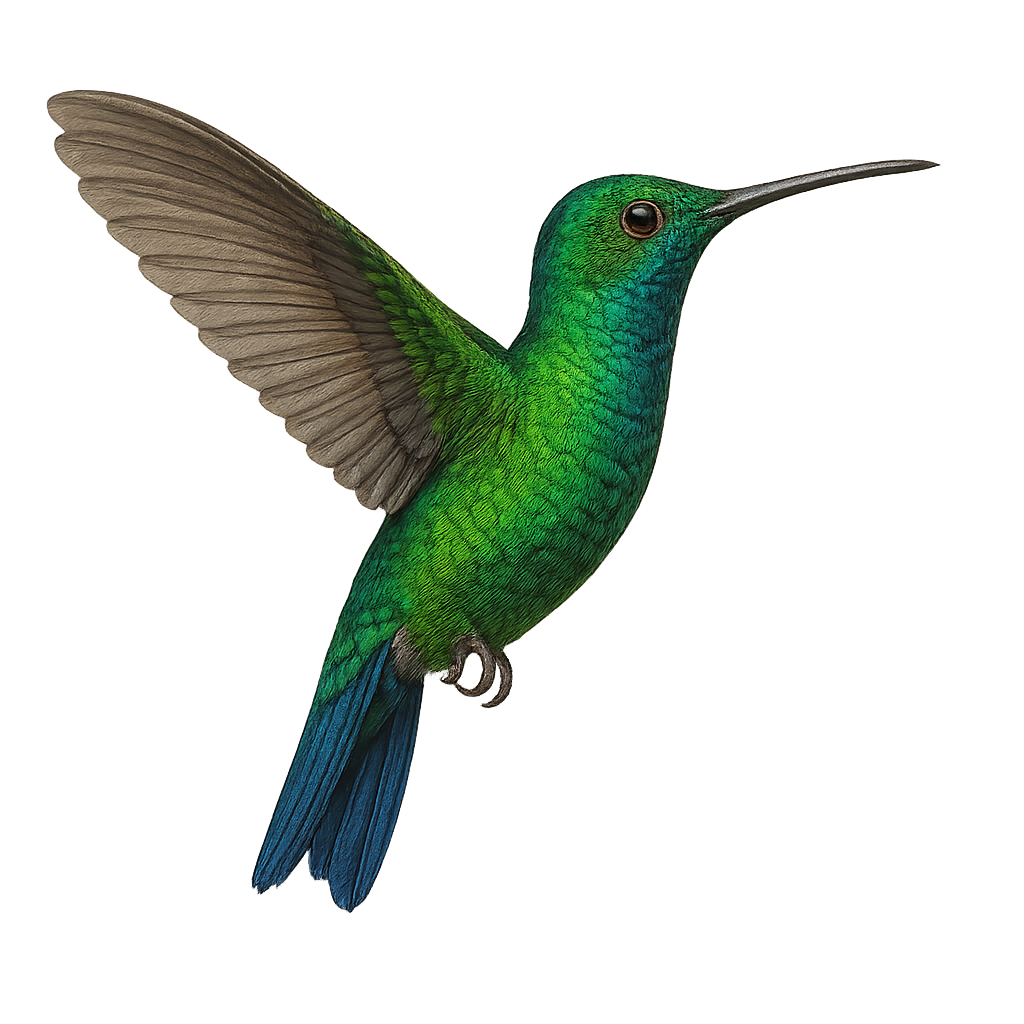Your wildlife photography guide.
Explore the blue-tailed emerald in detail, study its behavior, prepare your shots.
Where to observe and photograph the blue-tailed emerald in the wild
Learn where and when to spot the blue-tailed emerald in the wild, how to identify the species based on distinctive features, and what natural environments it inhabits. The WildlifePhotographer app offers tailored photography tips that reflect the blue-tailed emerald’s behavior, helping you capture better wildlife images. Explore the full species profile for key information including description, habitat, active periods, and approach techniques.
Blue-tailed Emerald
Scientific name: Chlorostilbon mellisugus

IUCN Status: Least Concern
Family: TROCHILIDAE
Group: Birds
Sensitivity to human approach: Suspicious
Minimum approach distance: 3 m
Courtship display: February to May
Incubation: 14-16 jours
Hatchings: February to June
Habitat:
Tropical forests, gardens, forest edges
Activity period :
Primarily active during the day, with peak activity in the morning and late afternoon.
Identification and description:
The Blue-tailed Emerald, or Chlorostilbon mellisugus, is a small bird with vibrant, metallic green plumage and a distinctive bluish tail. It has a slender, slightly curved bill, perfect for feeding on flower nectar. This hummingbird is widespread in South America, inhabiting various environments from tropical forests to urban gardens. Known for its rapid and agile flight, it often produces characteristic buzzing sounds. Males are particularly territorial, vigorously defending their feeding areas. The breeding season varies by region, but nests are typically constructed with plant materials and spider webs.
Recommended lens:
400 mm – adjust based on distance, desired framing (portrait or habitat), and approach conditions.
Photography tips:
To photograph the Blue-tailed Emerald, it's advisable to use a telephoto lens of at least 400mm to capture the details of its plumage without disturbing it. Approach slowly and maintain a distance of at least 3 meters to avoid startling the bird. Look for areas with abundant flowers, as these birds are often seen feeding. The natural light of the morning or afternoon is ideal for highlighting the metallic colors of their plumage. Be patient and ready to capture moments of rapid flight.
The WildlifePhotographer App is coming soon!
Be the first to explore the best nature spots, track rutting seasons, log your observations, and observe more wildlife.
Already 1 439 wildlife lovers subscribed worldwide

